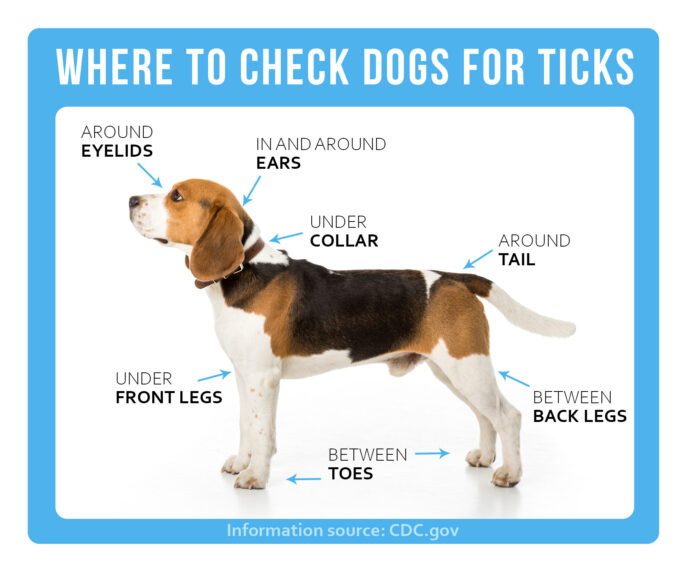Ticks are, by most accounts, horrid little creatures. They latch onto your furry friends (and yourself) whenever they can, feast on their blood, and spread diseases like lyme disease to you and your furry companions. Ticks can come from anywhere at all, including when you bring your dog out to use the bathroom in your yard. Tick season is shaping up to be bad this year due to a mild winter, so let’s talk about the various organic tick prevention methods.
#1: Treating your yard – organically
Did you know? It’s possible to treat your yard for ticks. Some of the best prevention methods for tick control is basic yard maintenance. Ensure that you’re cutting long grass and weeds where your dog can reach, and not letting your dog run into overgrown areas. Ticks love overgrown weeds as they’re perfect for latching onto bigger animals like our dog friends. Making sure your yard is neat and trim will cut down ticks dramatically.
You can also create a barrier in your yard with a product called Diatomaceous Earth. This product is an abrasive rather than a poison. Basically, how it works is when an insect crawls over it, it will score the outer layer of the bug. This can also help keep earwigs, beetles, and other crawling insects out of your house.
You can also spray a product called neem oil, which is a naturally occurring pesticide used by many organic gardeners. This product is safe for human consumption, pets, and best of all — doesn’t harm the bees! Still, if you have water features in your backyard, live on a river or lake, you may want to consult with preservation societies to ensure you’re not poisoning the fish by spraying, as neem oil can be detrimental to fish and other aquatic organisms.
Lastly, you can also plant shrubs, bushes, and plants that ticks dislike, such as lavender, garlic, sage, mints, and others. Just be sure to do your research if you put any of these where your dog can reach to ensure you’re not planting anything toxic to your dog.
#2: Collars & Tags
Flea and tick collars are a pretty tried and true method of tick prevention. Organic and natural methods of tick prevention extend out to these collars. Tick repellent collars for dogs usually include cedar oil and are quite reasonably priced. Some companies even offer tags instead of full collars.
#3: Spot Treatments
Another treatment method for tick prevention is spot treatments. These treatments are applied between the shoulders on the dog, and then it spreads out over the body gradually (you may even see a “wet spot” for a day or two). Some spot treatments are even waterproof after application, and can work for some time. Organic spot treatments for dogs usually include eucalyptus oil, cedar oil, or peppermint oil. It’s important to note that not all organic oils are good for dogs and cats, especially if they manage to lick it up. Cinnamon oil and clove oil should be avoided entirely. Remember that, just like anything, you should keep an eye on your dog when trying a new treatment method. If you notice any strange behavior, stop completely and call your vet.
#4: Chewables & Medication
Organic chewable medications usually include garlic and brewer’s yeast as a way of combating tick bites. Unfortunately, chewables and oral medications do not keep the tick from latching on in the first place, so they may be a less desirable method. However, if you can’t get your dog to stand still for a spot treatment application, or always rips off their collar, it may be a good method for you. Oral medications can also prevent other parasites like heartworm from developing.
We hope this post helped to inform you and give you some choices about tick repellent. There are many methods out there available to use, and we recommend using some method over none at all. Remember that talking to your vet can give you some of the best advice for your dog in particular, so make sure to consult with your vet as well!

